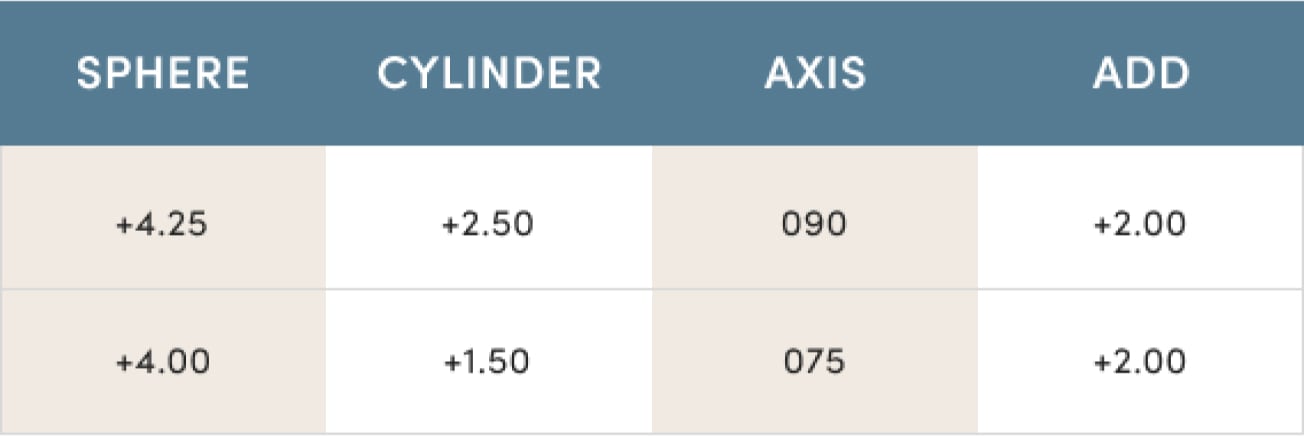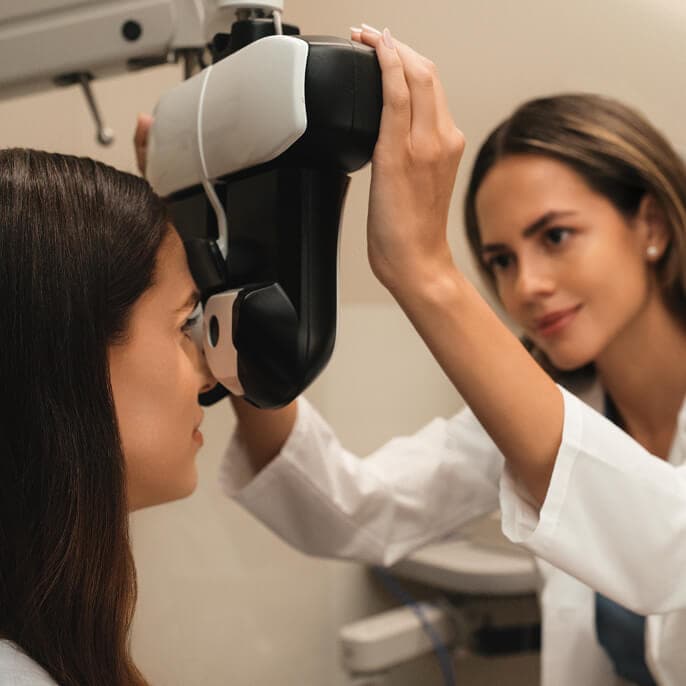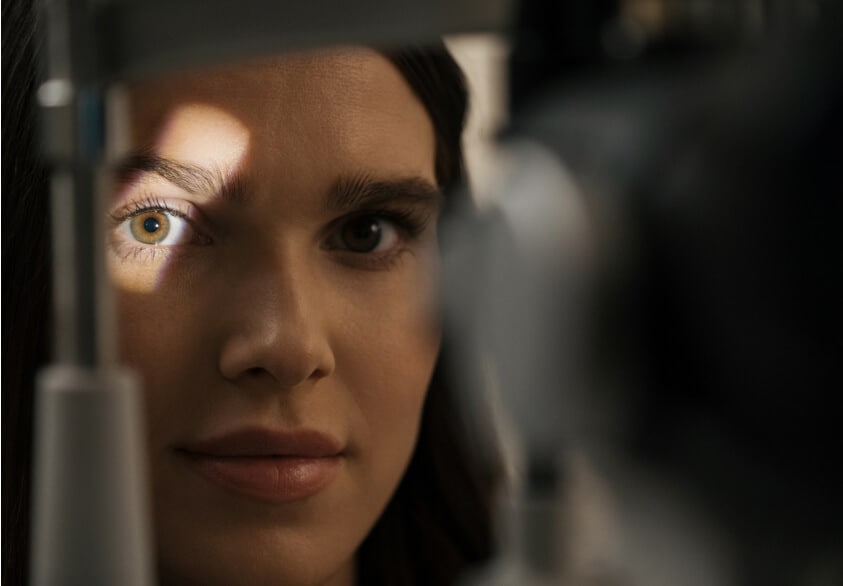HOW TO READ
YOUR
GLASSES
PRESCRIPTION
Have you ever looked at the numbers and letters on your vision prescription and wondered what they mean? Whether you're a longtime glasses wearer or a newbie, knowing how to read your prescription will help you recognize when and how it changes.

SINGLE-VISION OR
MULTIFOCAL?
The first thing to keep in mind when understanding your vision Rx is what type of prescription it is: single-vision or multifocal.
Single-vision and multifocal eyeglass prescriptions look different because they correct different vision problems. A single-vision
prescription means your lenses correct for one viewing distance. This is used to correct conditions such as nearsightedness or
farsightedness (with or without astigmatism).
Bifocal or multifocal lenses have two or more corrective powers. These lens types correct near, far and sometimes intermediate-range
vision.
People with multifocal or progressive lens prescriptions will have a number in the ADD column of their vision prescription. ADD is the
additional magnifying power applied to the bottom of a multifocal lens to correct presbyopia. Presbyopia is the age-related vision change
that affects a person’s ability to focus on close objects.
YOUR PRESCRIPTION
DECODED
Your eyeglass prescription is typically presented in a grid like the one below. The grid includes a combination of terms, abbreviations and
numbers.
Usually, you will see the abbreviations O.D. and O.S. along the left side of the grid.
O.D. (oculus dexter) represents the right eye, so the numbers you see in the O.D. row apply to your right eye. O.S. (oculus sinister)
represents the left eye, which means the numbers in the O.S. row reflect your left eye’s prescription. Your eyes may have the same
prescription, or they may have different prescriptions. At the top of the grid, you may see the terms SPHERE, CYLINDER, AXIS and ADD. These
terms reflect measurements of specific parts of your vision.
SPH (or sphere) indicates the eyeglass prescription power, or how strong your lenses need to be to correct your vision. If you are
nearsighted, the number in this field will have a minus sign (-) in front of it. Farsighted prescriptions have a plus sign (+) in front of
the number.
- A (-) on your Rx means you’re nearsighted and struggle to see things far away.
- A (+) on your Rx means you’re farsighted and have trouble seeing things up close.
CYL (or cylinder) indicates astigmatism — a condition in which irregularities in the shape of the cornea cause blurred or distorted
vision. The number in the CYL box reflects the power needed to correct the astigmatism.
AXIS describes the angle of your astigmatism. If you do not have astigmatism, the CYL and AXIS boxes will be blank.
ADD is the added magnifying power in the lower part of a multifocal lens. It is used to correct presbyopia.
If you need a bifocal or progressive lens, there will be a number in the ADD box. In single-vision prescriptions, this column will be blank.

sphere vs cylinder prescription
It’s possible for a prescription to have numbers under both SPHERE and CYLINDER, but it’s also possible to have a number in just one of
these fields. If someone needs correction for astigmatism only, the SPHERE box will say “Pl” or "Plano."

MAKING SENSE OF
THE NUMBERS
Your glasses prescription includes a number for every aspect of your vision that needs correction. Usually, the farther the number is
from zero, the worse your uncorrected vision is. A larger number (whether positive or negative) indicates a stronger prescription that
offers more correction, while a smaller number indicates a weaker prescription.
No matter what your eyeglass prescription is, or whatever kind of vision correction you need, it's good to have your eyes examined about
once a year. This ensures your prescription for glasses or contact lenses is always up to date.
Arrange an eye exam in 3 easy steps
Choose your location
Arrange an eye exam
Add to calendar


















































